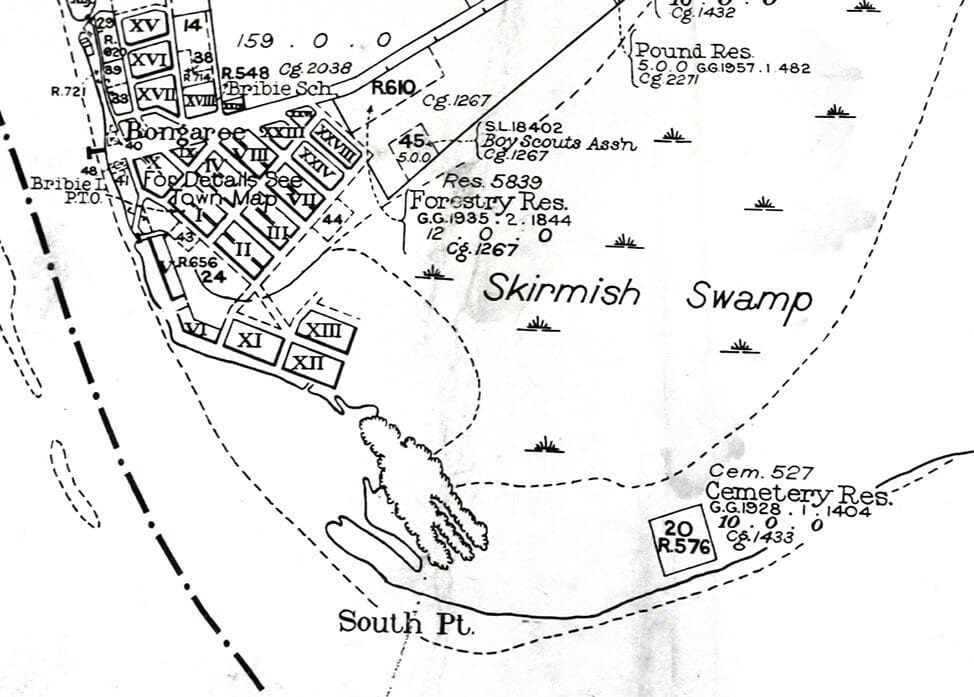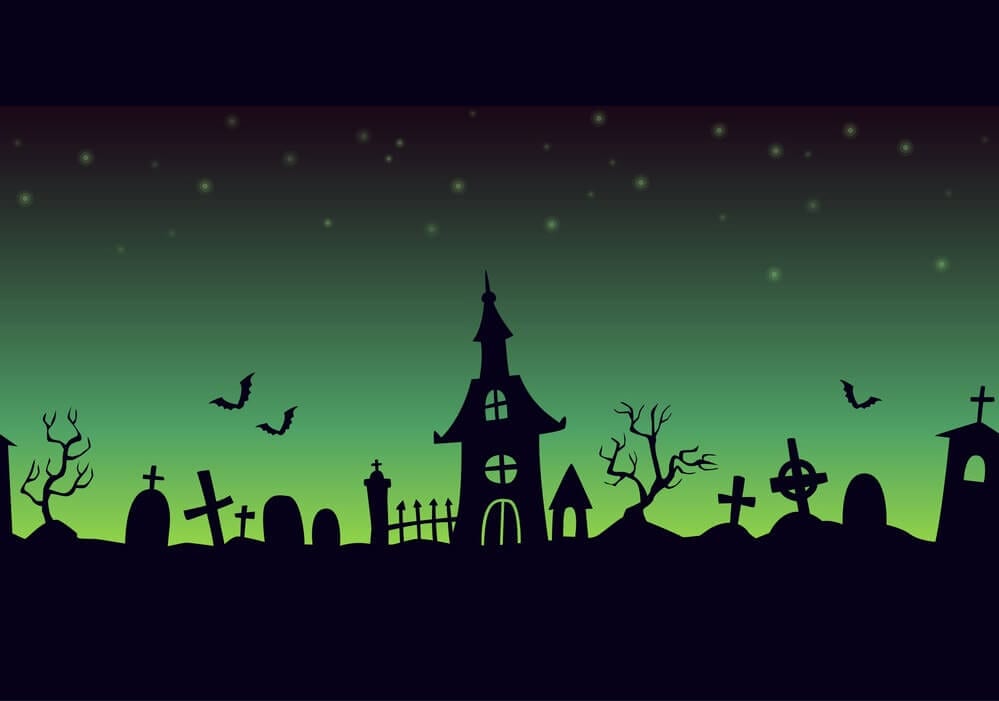Tags: History. Bribie Island. Moreton Bay. Brisbane. Queensland. Cemeteries
Although there is a well maintained Memorial Garden for cremated ashes to be interred, there is no Cemetery on Bribie Island. Well ….there is no longer a Cemetery on Bribie, but you may be surprised to learn that there have been two Cemeteries on Bribie Island over the years. You may be even more surprised to know that there have only been two official burials, one in each of the two Cemeteries and that only one body still remains in the ground.
Let me explain how this all came about, and how some recent discoveries have revealed artefacts from the very first burial on Bribie Island 84 years ago. There would, of course, have been many Aboriginal deaths on the land that is now Bribie Island over thousands of years, but 6000 years ago the whole of Moreton Bay was dry land, and the coastline and sea were over 50 km away from here. The coastline of Queensland has only been this way for about 1000 years, and Bribie has probably only been an island for about 250 years. Early settlers could walk and swim their cattle across from the mainland.
The pioneer Queenslander Tom Petrie, who supervised Queensland’s first Aboriginal Reserve on Bribie Island in 1877, wrote in his “Reminiscences of Early Queensland” of hearing the morning and evening Wailing for the Dead. How relatives would gather to cry and old women would cut their heads with Yam digging sticks, and younger women would cut their thighs with sharp flint stones until their legs were covered in blood. After any death, the Aboriginal Camp would be immediately relocated and the trees around would be marked to show what had taken place.
There have been so many ways of dealing with death and the departed in all civilisations over time. Around the world today many different religions and cultures conduct their various practices and customs related to the dead. Christian religions generally cremate or bury their dead in official Cemeteries and Graveyards.
ESTABLISHING BONGAREE TOWNSHIP
Soon after the new Township of Bongaree was gazetted and surveyed on Bribie in 1912, reserved were established for various public purposes, including a Cemetery Reserve in 1920. The Cemetery site was simply an area marked on the Map, situated a long way from the small settlement population of Bongaree. Although Bribie became a popular holiday destination for many thousands of visitors over the next 15 years, and the resident population grew to almost 100 people, the Cemetery (Ref R576 in image below) was not used until 1935.

Cemetery Reserve Site, 1920 Bongaree
ALBERT SWEETING
Albert Sweeting was an interesting man who was the very first to be buried on Bribie in 1935. He was born in Luton in Bedfordshire UK in 1878, worked as a Printer, married Mabel Graves and they had two daughters. In World War 1 Albert enlisted in the Army and fought in Europe, but after the War, he left his wife and eldest daughter and migrated to Australia with his girlfriend and youngest daughter. They settled in Brisbane where Albert worked for the Government until the Depression when he moved to live on Bribie Island. He had a small farm at Woorim near Ocean Beach where he grew vegetables and lived in “The Cabin” with a small shop. He was not a well man, and after months of sickness, he made it clear that he wanted to be buried on Bribie Island when the end came. In October 1935, just two months before he died, he wrote a letter to his daughter and family in Brisbane. In 1935 the world was in the grip of the Great Depression, Hitler was in Germany, Mussolini was in Italy and the threat of Civil War in Spain made the possibility of another World War very real. Here is a very brief extract of his letter to his daughter in 1935 (see letter below)
My Dearest Edie, Jack and kiddies Here is the very much delayed letter but you must not think I’m ungrateful of anything like that because I’ve not written before, but you know full well that I am dead beat each night after I’ve finished work etc that I have not got the energy to sit and write. I am going to sell groceries, soft drinks, fruit and vegetables, fishing gear also taking orders for worms for bait and it is going to hit the Kiosk a tidy old bump. I have had a few nasty “attacks” recently and once had to be led in and stretched out. It is the worst attack I have had for nearly two years and it left me in a rather weak condition. As luck would have it I had no spirits or anything like that in the house, the last I had gave to someone who was ill, but that’s always the case, there’s never any when you are in need of it yourself. What do you think of the War Jack? It is certainly looking black and I guess it won’t end until they send for me, and then if the Italians know I’m coming they will “throw in” !. But joking apart I would not be surprised to be called up in the event of Britain coming in. If only the Military Officials will look after my business I will willingly go and do my bit once more and if anything should happen to me—well I’ve had a good innings and I’m now 57 and cannot grumble.
Your Loving Dad.
FIRST BURIAL ON BRIBIE
Albert Sweeting passed away just two months later on December 17th 1935, (he was actually aged 59 according to his birth records) but when it came to arranging his funeral and burial on Bribie, nobody knew where the site of the gazetted Bongaree Cemetery actually was. The Lands Dept. provided a Map, and with a compass and measuring tape a group of volunteers, under the direction of honorary Councillor Bill Shirley, cleared a track through the thick bush for over a mile to the area shown on the Map as the site of the Cemetery reserve.
This was about one and half kilometres from where todays road goes down to the Car Park at Red Beach. In 1935 this was thick impenetrable bush, teeming with mosquitoes, snakes, goanna’s, birdlife, kangaroo and Emu. A grave was dug, a wooden coffin made, a metal plate engraved and a simple wooden cross constructed. In 1935 Bribie had both an Anglican and Methodist church but no resident Ministers, as Church Services were only held once a month.
Reverend T. Gilbert was organised to come over on the Steamship from Redcliffe and Bill Shirley made arrangements for a Services to be conducted at St. Peters Church, with one of his transport trucks to serve as a Hearst. This first Funeral and Burial on Bribie took place on Christmas Eve 1935 and was attended by most Bribie residents and many hundreds of holiday visitors. The mourners walk the long hot sandy track to the clearing where a graveside service was held, and Albert Sweetings coffin was lowered into the ground and a wooden cross marked the site. Nobody went near this inaccessible site for a long time, and no other burials ever took place.
Grave Of Frank Lee
BONGAREE CEMETERY CLOSED
Nineteen years later in 1954 the Dept. of Lands decided to declassify the Cemetery site and contacted Albert Sweetings family asking if they would like to relocate the body. After 19 years, with the grave site still inaccessible and the cross long since eaten by white ants, they decided to leave Albert in the ground undisturbed. The Bongaree Cemetery site near Red Beach officially closed and removed from the gazetted survey in 1954. It was then decided to gazette a new Cemetery site away from the water and beaches, accessible from the Ocean Beach road to Woorim.
This new Cemetery site was gazetted in the bush, north of First Avenue, where Armitage Street and McMahon streets are today. The first and only person to be buried there was that of Frank Bernard Lee in 1964, a prominent Bribie business owner who had moved to Bribie with his family in 1953. The Lee family are still in business on Bribie today.
FRANK BERNARD LEE
Frank Bernard Lee was the only person to be buried in this new Cemetery site over several years, and in 1977 the Caboolture Shire Council decided to develop a new Industrial Park on land in that area. This second Cemetery site was once again to be closed and withdrawn. The Lee family were contacted and they decided to relocate the body and have it reinterred at Gympie.
The Industrial Land was then developed and subdivided, and in 1983 Victory Press purchased part of the old Cemetery site on which Frank Lees grave had been, and built their Printing business there, which is still thriving today. In recognition of the late Frank Lee, they erected a memorial Pergola in the grounds of the business which remained there for many years until extensions were carried out.
Frank Lee grave memorial pergola at Victory Press
RECENT DISCOVERIES
It seemed to have taken over 50 years for the appropriate Authorities to realise that putting a coffin 6 foot under in the sand anywhere on Bribie Island was likely to be impacted by the high Water Table and risk of pollution. Apart from the first burial in 1935, and the second almost 30 years later in 1964, there was no action regarding grave sites or burials until just recently in 2015. A man working with a Metal Detector in remote bushland near South Point came upon a broken and corroded engraved metal plate. When cleaned and placed together it could clearly be seen to read ALBERT EDWARD SWEETING – AGED 59 YEARS.

Sweeting Coffin Plate
Further digging revealed some other items which appear to be handles or pins from the coffin. There was no evidence of the original Wooden Cross or any other items from the burial This recent chance discovery brings my story about earlier Cemetery sites on Bribie into real life and becomes an important artefact of Bribie’s fascinating past. The Historical Society continues to research and document the rich history of this Island and you can view some more interesting stories on our Blog Site at http://bribieislandhistory.blogspot.com or contact us on [email protected]


